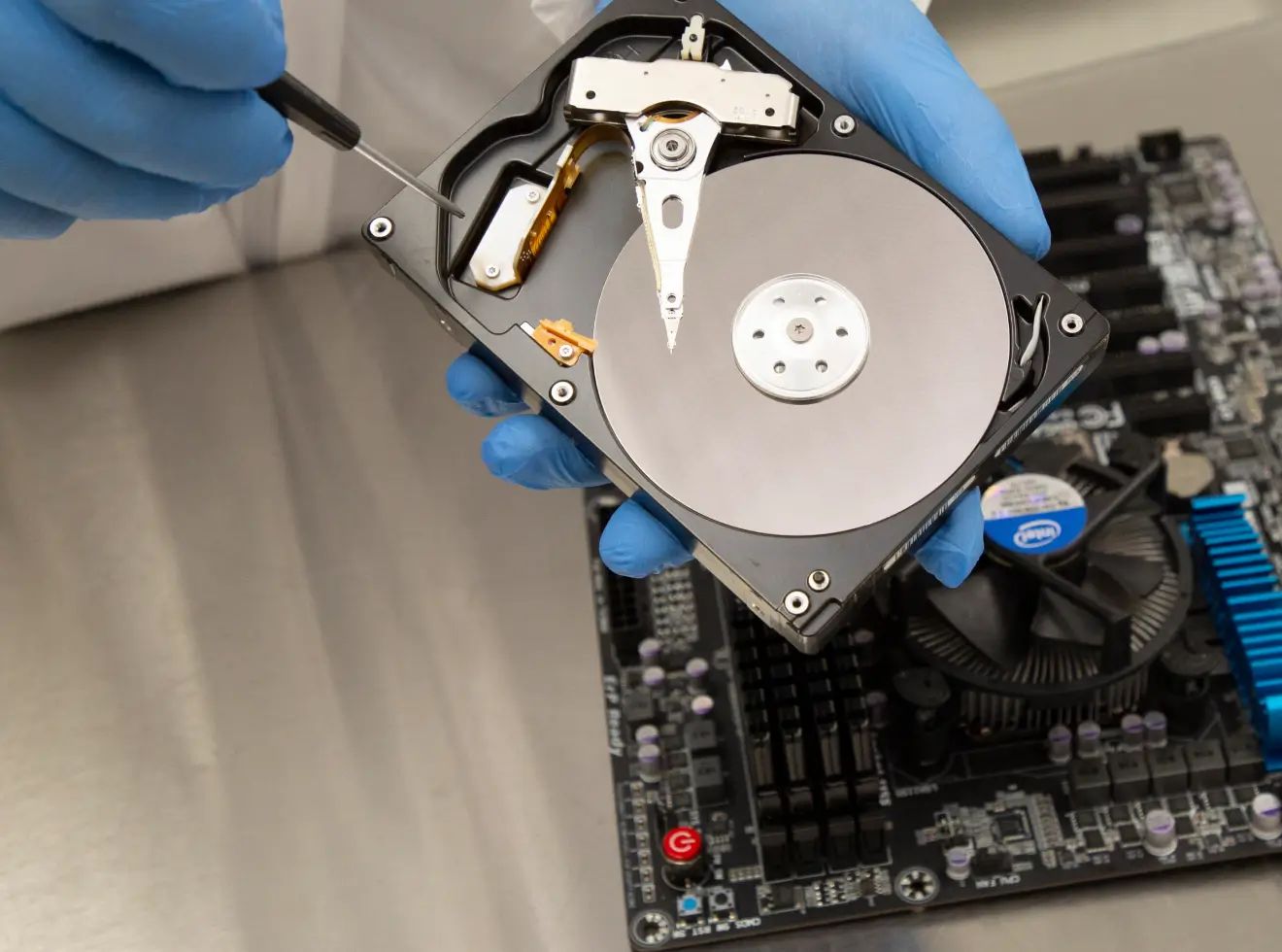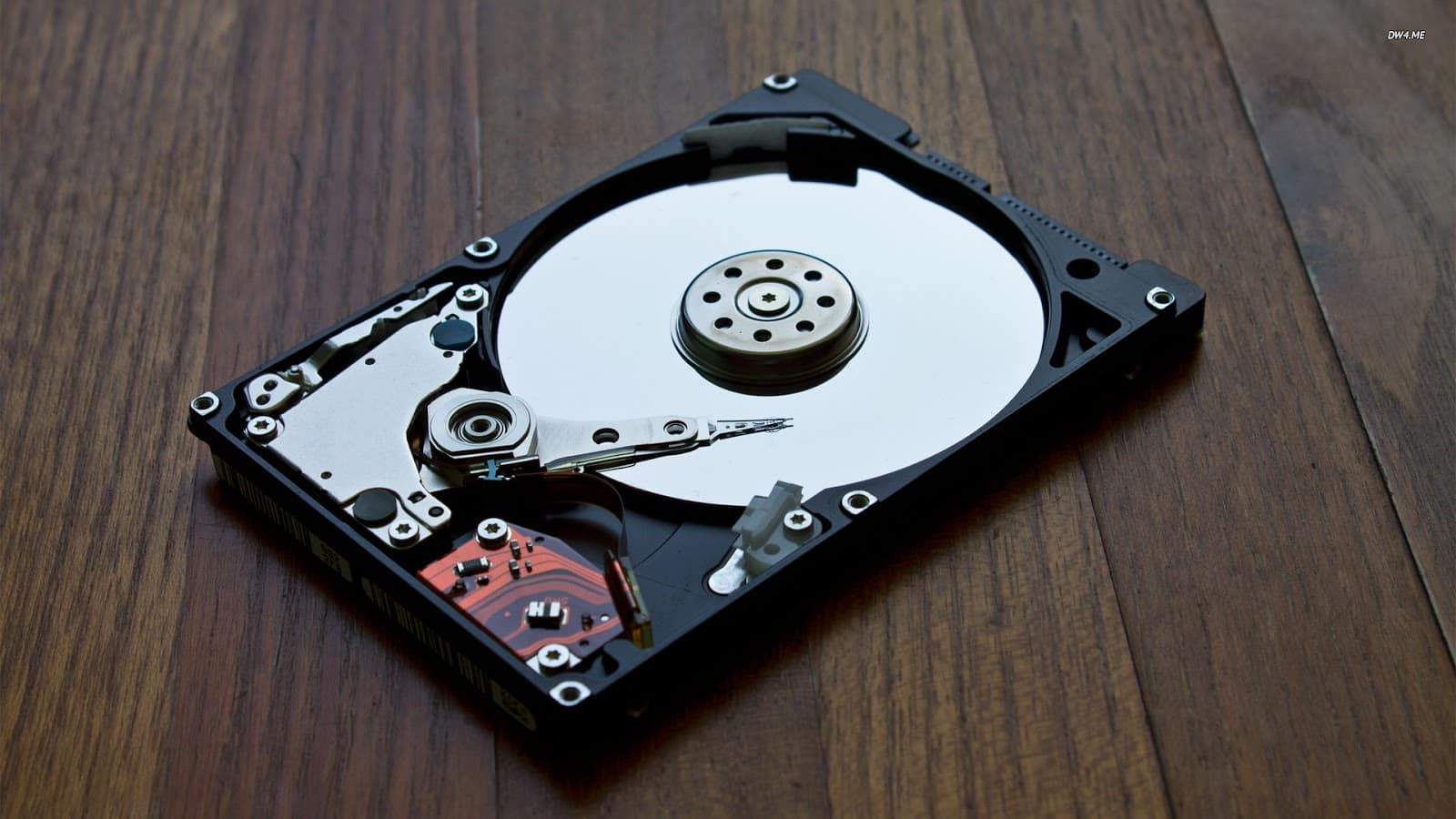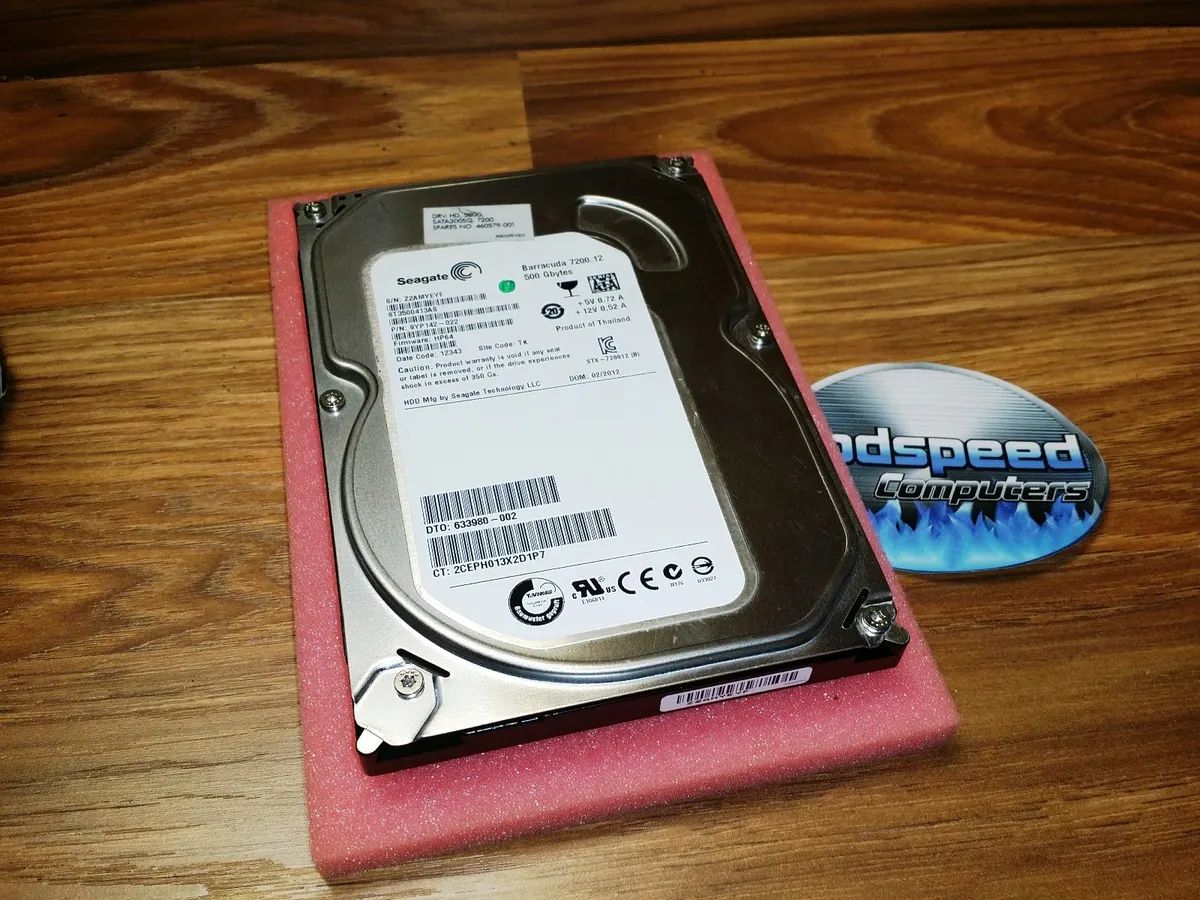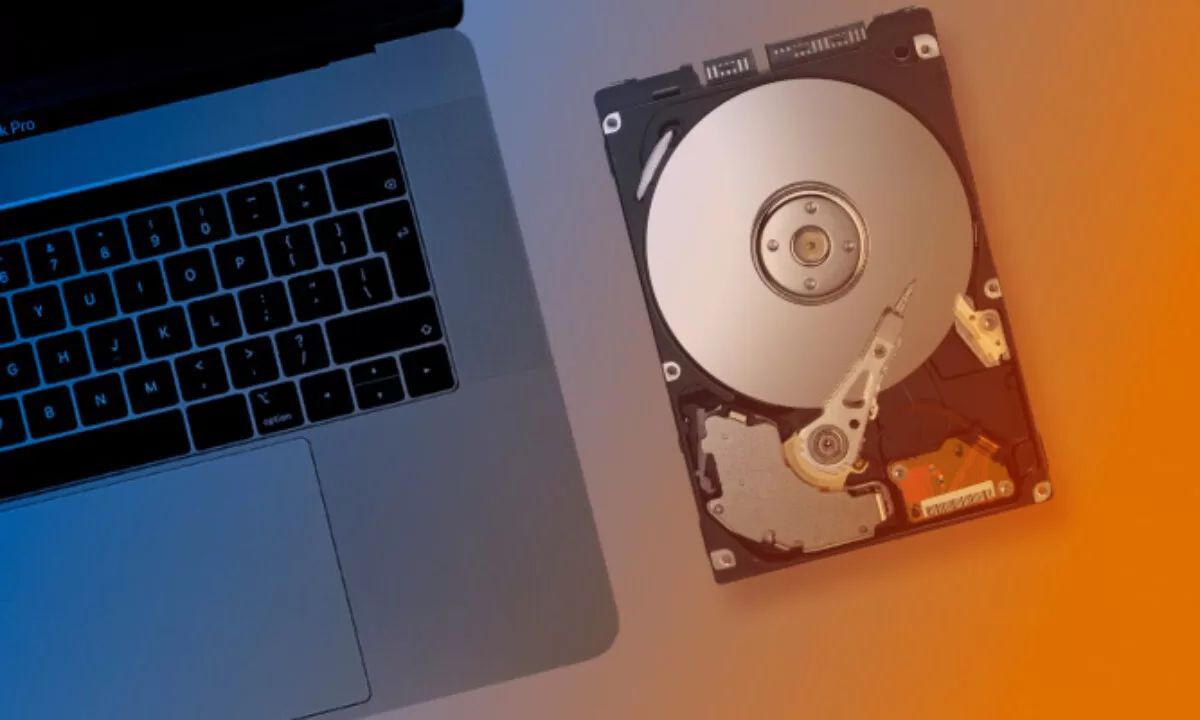Introduction
A recovery hard disk drive, often abbreviated as a recovery HDD, is an essential tool for data recovery and backup. In today’s technology-driven world, where data has become the lifeblood of businesses and individuals alike, the risk of data loss is a constant concern. Whether it’s due to hardware failure, accidental deletion, or a malicious attack, losing important files can be devastating. This is where a recovery hard disk drive comes into play.
Unlike a regular hard disk drive (HDD) that stores data for normal use, a recovery HDD is specifically designed to rescue data from damaged or corrupted drives. It acts as a safety net, offering a reliable and efficient solution when disaster strikes.
In this article, we will explore the concept of a recovery hard disk drive, understand how it works, and discuss its numerous benefits. We will also delve into the different types of recovery HDDs available in the market and highlight the key factors to consider when choosing one.
By the end of this article, you will have a comprehensive understanding of recovery hard disk drives, enabling you to make an informed decision when it comes to safeguarding your valuable data.
What is a Recovery Hard Disk Drive?
A recovery hard disk drive, or recovery HDD, is a specialized device designed to retrieve and restore data from damaged or inaccessible storage media. It serves as a crucial tool in data recovery, helping users retrieve valuable information from malfunctioning hard drives, solid-state drives (SSDs), and other storage devices.
When a storage device fails due to physical damage, logical errors, or accidental data loss, a recovery HDD plays a vital role in the recovery process. It acts as a secondary storage medium that allows technicians or individuals to access the corrupted or deleted data and restore it to a usable state.
Recovery HDDs are equipped with advanced technologies and software that facilitate the recovery process. They can bypass damaged areas of a hard drive, repair file system errors, and retrieve data from fragmented or partially overwritten files.
These devices often come pre-loaded with data recovery software, making it easier for non-technical users to recover lost files without the need for specialized knowledge or expertise.
Furthermore, recovery HDDs are typically portable and lightweight, allowing for convenient and efficient data recovery on the go. They are compatible with various operating systems and can be connected to computers via USB or other interfaces.
It’s important to note that a recovery HDD should not be confused with a regular external hard drive used for data backup. While both devices serve the purpose of storing data, a recovery HDD focuses specifically on retrieving lost or damaged files, whereas an external hard drive is primarily used for creating backups of existing data to prevent potential data loss.
Overall, a recovery hard disk drive is an indispensable tool for anyone facing data loss or corruption issues. It provides a reliable and effective solution for recovering important files, offering peace of mind in the face of unexpected data disasters.
How Does a Recovery Hard Disk Drive Work?
A recovery hard disk drive (HDD) operates using specialized software and hardware components to perform the intricate task of data recovery. The process involves several key steps to successfully retrieve and restore lost, damaged, or deleted files.
1. Evaluation: The first step is to evaluate the extent of data loss or corruption. This involves examining the problematic storage media and determining the cause of the issue. Technicians or users can use diagnostic tools and software to identify the nature and severity of the problem.
2. Cloning: Once the evaluation is complete, the next step is to create a clone or image of the affected storage device. This ensures that the recovery process does not further damage or modify the original data. The recovery HDD copies the data from the damaged drive to its own storage space, enabling the retrieval process to take place without risking any further loss.
3. Repairing the File System: One of the primary functions of a recovery HDD is to repair or reconstruct the damaged file system. This involves correcting errors, fixing file structure inconsistencies, and rebuilding the necessary data structures to allow for file recovery.
4. Scanning and Data Recovery: After repairing the file system, the recovery HDD scans the cloned drive or image to search for recoverable data. Advanced scanning algorithms analyze the storage media to find traces of files that have been deleted, corrupted, or lost due to various reasons. This scanning process can be time-consuming, depending on the size of the drive and the complexity of the damage.
5. File Extraction and Restoration: Once the recovery HDD finishes scanning, it begins the process of extracting and restoring the recovered files. The user or technician can browse through the recovered data, preview the files, and selectively choose which ones to restore. The recovery HDD facilitates the transfer of the retrieved files back to the original drive or a different storage location.
6. Verification and Integrity Checks: To ensure the quality and integrity of the recovered data, a recovery HDD performs verification checks. These checks compare the restored files with their original state to verify if they have been successfully recovered without any data corruption or loss.
By following these steps, a recovery HDD allows users or technicians to salvage important data from damaged or inaccessible storage media. It offers a comprehensive and systematic approach to data recovery, increasing the chances of successful retrieval and minimizing the risk of permanent data loss.
Benefits of Using a Recovery Hard Disk Drive
A recovery hard disk drive (HDD) offers several significant benefits when it comes to data recovery and backup. Whether you are an individual user or a business entity, utilizing a recovery HDD can prove to be invaluable in various situations. Here are some of the key benefits of using a recovery HDD:
1. Data Retrieval: The primary benefit of a recovery HDD is the ability to retrieve and recover lost, damaged, or deleted files. Whether it’s due to accidental deletion, hardware failure, or corruption, a recovery HDD enables users to recover valuable data that would otherwise be deemed unrecoverable.
2. Professional-Grade Recovery: Recovery HDDs often come equipped with advanced data recovery software and tools. These tools are designed to handle complex data recovery scenarios, making them suitable for professional data recovery technicians. They provide the necessary features and functionalities to recover data from a wide range of storage devices, including hard drives, SSDs, USB drives, and memory cards.
3. Time and Cost Savings: Utilizing a recovery HDD can save significant time and cost compared to outsourcing data recovery services. Instead of waiting for days or weeks for a professional to recover your data, a recovery HDD allows you to recover the data at your own convenience. It eliminates the need for expensive data recovery services, which can often come with hefty fees.
4. DIY Approach: Using a recovery HDD empowers users to take matters into their own hands when it comes to data recovery. With the pre-loaded software and user-friendly interface, even non-technical users can navigate through the recovery process with ease. It provides a DIY approach to data recovery, where users can retain full control over the recovery process.
5. Convenient and Portable: Recovery HDDs are typically designed to be portable and lightweight, allowing for convenient use and easy transportation. This makes them ideal for on-the-go data recovery scenarios. Whether you’re a professional IT technician working on-site or an individual recovering data from a friend’s computer, the ease of use and portability of a recovery HDD can significantly enhance the overall experience.
6. Protection Against Data Loss: By using a recovery HDD as a backup solution, you can proactively protect yourself against data loss. Regularly creating backups of your important files ensures that you have an additional copy of the data in case of any unforeseen events. It provides an added layer of security and peace of mind knowing that your valuable data is protected.
In summary, a recovery hard disk drive offers several benefits, including data retrieval, professional-grade recovery capabilities, time and cost savings, a DIY approach to data recovery, convenience and portability, and protection against data loss. These benefits make it a valuable investment for individuals and businesses seeking an effective and efficient solution to data recovery and backup needs.
Types of Recovery Hard Disk Drives
There are different types of recovery hard disk drives (HDDs) available in the market. Each type has its own unique features and specifications, catering to different data recovery needs. Let’s explore some of the common types of recovery HDDs:
1. External Recovery HDDs: These are standalone devices that connect to a computer or device externally, typically via USB or other interfaces. They are portable and convenient to use, making them suitable for on-the-go data recovery. External recovery HDDs often come pre-loaded with data recovery software, allowing users to easily recover data without the need for additional tools.
2. Internal Recovery HDDs: Internal recovery HDDs are installed directly inside a computer or storage device. They function similarly to regular internal hard drives, but with specialized firmware and software designed for data recovery purposes. These recovery HDDs are commonly used by professional data recovery technicians and IT departments to perform in-depth and complex recovery operations.
3. Network-Attached Storage (NAS) Recovery HDDs: NAS recovery HDDs are specifically designed for data recovery from network-attached storage devices. NAS devices are commonly used for file sharing and backup purposes in homes and small businesses. The recovery HDDs for NAS are equipped with the necessary software and capabilities to retrieve lost data from specialized NAS setups.
4. RAID Recovery HDDs: RAID recovery HDDs are designed to recover data from redundant array of independent disks (RAID) setups. RAID arrays combine multiple physical drives into a single logical unit for improved performance and data redundancy. In the event of a drive failure or data loss, a RAID recovery HDD can analyze and reconstruct the RAID configuration to restore the lost data.
5. Solid-State Drive (SSD) Recovery HDDs: As SSDs become increasingly popular, recovery HDDs tailored for SSD recovery have emerged. These specialized recovery HDDs have the capability to recover data from damaged or failed SSDs. They utilize specific techniques to handle the unique challenges associated with SSD data recovery, such as wear leveling, TRIM functions, and complex flash memory structures.
6. Cloud-Based Recovery HDDs: Cloud-based recovery HDDs utilize cloud storage and remote recovery capabilities. These recovery HDDs are typically connected to a central cloud infrastructure, allowing for data recovery and restoration over the internet. Cloud-based recovery HDDs offer the convenience of remote recovery and can be particularly useful for businesses with multiple locations or individuals who prefer a cloud-based backup and recovery solution.
It’s important to note that each type of recovery HDD has its own advantages and limitations. The choice depends on factors such as the nature of data loss, the type of storage media involved, and the level of expertise or technical knowledge required for the recovery process.
By understanding the different types of recovery HDDs available, users can make informed decisions when selecting the most suitable device for their specific data recovery needs.
Factors to Consider When Choosing a Recovery Hard Disk Drive
When selecting a recovery hard disk drive (HDD), it’s important to consider various factors to ensure that you choose the right device for your data recovery needs. Here are some key factors to consider:
1. Compatibility: Ensure that the recovery HDD is compatible with the operating system(s) you will be using it with. Check for compatibility with both Windows and macOS if you plan to use it on different systems. Compatibility extends to the interface as well, such as USB, Thunderbolt, or SATA, to ensure seamless connectivity.
2. Storage Capacity: Consider the storage capacity of the recovery HDD. Choose a capacity that accommodates your data recovery requirements. Opt for a larger capacity if you anticipate dealing with larger amounts of data or if you plan to use the HDD for regular backups alongside data recovery.
3. Speed and Performance: Look for a recovery HDD with fast read and write speeds to ensure efficient data transfer and recovery. A higher RPM (rotation per minute) or an SSD-based recovery HDD can offer faster performance, resulting in quicker recovery times.
4. Reliability and Durability: Data recovery can be a sensitive and meticulous process. Choose a recovery HDD from a reputable brand that offers reliability and durability. Look for features such as shock resistance or rugged build quality to ensure that the HDD can withstand daily use and transportation if needed.
5. Software and Tools: Evaluate the data recovery software and tools included with the recovery HDD. Check if the software has user-friendly interfaces, advanced scanning capabilities, and a wide range of file format support. Consider whether the software provides additional features like file preview, selective recovery, or the ability to create disk images for more complex recovery scenarios.
6. Customer Support: Look for a recovery HDD manufacturer that offers reliable customer support and assistance. Check for warranty coverage and assess the company’s reputation for providing timely and effective support in case of any issues or inquiries.
7. Price: Consider your budget when choosing a recovery HDD. Compare the prices of different models and brands, taking into account the features and benefits offered. Balance the cost with the value you expect to receive from the recovery HDD.
8. Reviews and Recommendations: Before making a final decision, read reviews and seek recommendations from other users or experts in the field. Their experiences and insights can provide valuable information and help you make an informed decision.
By considering these factors, you can choose a recovery HDD that meets your specific data recovery needs, offering reliable performance, convenience, and peace of mind when it comes to safeguarding and recovering your valuable data.
Common Features of Recovery Hard Disk Drives
Recovery hard disk drives (HDDs) come with various features that enhance their functionality and effectiveness in data recovery. Understanding these common features can help users make informed decisions when selecting a recovery HDD. Here are some of the key features to look for:
1. Data Recovery Software: Recovery HDDs often come pre-loaded with data recovery software or provide access to reliable and reputable recovery software. This software enables users to scan, recover, and restore lost data from damaged or corrupted storage devices. Look for recovery HDDs that offer robust, user-friendly software with advanced recovery capabilities.
2. Compatibility: Recovery HDDs should be compatible with a wide range of storage devices and operating systems. Look for devices that support popular file systems, such as NTFS, FAT, exFAT, and HFS+, to ensure smooth and seamless compatibility with different drives and storage media.
3. User Interface: A user-friendly interface is crucial for efficient and stress-free data recovery. Look for recovery HDDs that provide intuitive interfaces, making it easy for both technical and non-technical users to navigate through the recovery process. Clear instructions, informative menus, and helpful tooltips can enhance the user experience.
4. File Preview: The ability to preview recovered files before restoration can save time and effort. Look for recovery HDDs that offer file preview functionality, allowing users to verify the integrity and content of recovered files. This feature helps ensure that you are restoring the correct files while avoiding the recovery of unnecessary or unwanted files.
5. Selective Recovery: Selective recovery is a valuable feature that allows users to choose specific files or folders for recovery. Instead of recovering an entire drive or a large volume of files, this feature enables users to selectively recover only the data they need, saving time and storage space.
6. Partition Recovery: Partition recovery is a feature that allows users to recover lost or deleted partitions, including their data and file systems. This feature can be particularly useful when dealing with scenarios where partitions have been accidentally deleted, formatted, or corrupted.
7. Disk Imaging: Disk imaging is a powerful feature that enables users to create exact replicas or images of damaged or corrupted drives. This process creates a bit-by-bit copy of the original drive, including its data, structure, and file systems. Disk imaging facilitates more advanced recovery processes and minimizes the risk of further damage to the original drive during the recovery process.
8. Security and Privacy: Look for recovery HDDs that prioritize data security and privacy. Features such as encryption and secure deletion of recovered files can help protect sensitive information and prevent unauthorized access to recovered data.
9. Diagnostic Tools: Recovery HDDs often include diagnostic tools that can assess the health and condition of storage devices. These tools can help users identify issues and determine whether data recovery is feasible or if professional assistance is required.
10. Durability and Portability: Recovery HDDs should be durable and portable, allowing for convenient and reliable use. Look for devices with shock resistance, rugged enclosures, and compact designs for ease of transportation and use in various environments.
By considering these common features, users can choose a recovery HDD that aligns with their data recovery needs and offers a reliable and efficient solution for accessing and restoring lost or damaged data.
Conclusion
Recovery hard disk drives (HDDs) play a vital role in data recovery and backup. These specialized devices offer numerous benefits, ranging from the retrieval of lost or damaged files to the convenience of a DIY approach. The different types of recovery HDDs, such as external, internal, NAS, RAID, SSD, and cloud-based, provide options for various data recovery scenarios.
When choosing a recovery HDD, it is important to consider factors such as compatibility, storage capacity, speed, performance, reliability, and customer support. These factors ensure that the selected recovery HDD meets specific data recovery needs and offers a dependable and efficient solution.
Common features found in recovery HDDs, including data recovery software, compatibility with multiple operating systems, user-friendly interfaces, file preview, selective recovery, partition recovery, disk imaging, security, privacy, diagnostic tools, durability, and portability, enhance the effectiveness of the recovery process and provide a seamless user experience.
In conclusion, a recovery HDD is a valuable tool for individuals and businesses seeking to recover lost, damaged, or deleted data. By investing in a reliable and feature-rich recovery HDD, users can have confidence in their ability to successfully retrieve precious files and safeguard against potential data disasters.

























